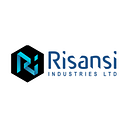Safety Tips for Using Slurry and Sludge Pumps
Using sludge and slurry pumps involves handling potentially hazardous materials, and safety should be a top priority. Significant volumes of liquids including soft and hard materials, such as mud, leaves, twigs, sand, ash slurry, crude oil, and human waste, are handled by slurry and sludge pumps. These pumps are special because even when particles degrade, the interior components remain undamaged.
Slurry and sludge pumps are essential for a variety of tasks, such as waste removal and the transportation of mined resources. Working with a reliable slurry pump manufacturer is crucial because of the variety of pump types available. Information regarding your industry, application, and the usual kind of solids treated will be given to you by a representative.
The following safety advice applies to the use of slurry and sludge pumps:
Training and Certification:
Make sure the people operating the slurry and sludge pumps have received the necessary training and certification. Safety precautions, emergency protocols, and equipment functioning should all be covered in proper training.
Personal Protective Equipment (PPE):
To prevent splashes and contact with the pumped materials, put on the proper personal safety equipment, such as gloves, goggles, face shields, and clothing resistant to chemicals.
Inspection of Equipment:
Check fittings, hoses, and pumps often for leaks, wear, and damage. Equipment malfunctions can endanger people’s safety and reduce pumping efficiency.
Ventilation:
To avoid fumes or gases building up, make sure the pump area is well-ventilated. To keep your workplace safe, use natural ventilation or exhaust systems.
Emergency Shutdown Protocols:
Make sure you are aware of and follow emergency shutdown protocols. In the event of an emergency, operators should know how to stop the pump promptly and safely.
Isolation of Power Sources:
To avoid unintentional starts, disconnect the pump from power sources before doing any repairs or modifications. Implement lockout/tagout protocols as necessary.
Prevent Overloading the Pump:
Follow the instructions provided by the manufacturer on the pump’s maximum capacity and constraints. Safety risks and equipment failure can result from overloading.
Venting the Pump:
Carefully and slowly open the pump at the drain plug only when it has cooled to room temperature.
Protective Guards:
Never operate a slurry pump without all necessary guards and shields in place.
Liquid:
Use just the kind of liquid — oil, gas, or water — that is intended for a pump.
Conclusion
Slurry and sludge pumps should always be operated safely by following industry best practices and consulting the specific instructions supplied by the pump manufacturer. To maintain a safe workplace, it’s also important to abide by regional laws and safety guidelines.
The Best Source for Pumps
There’s no need to look any further than Risansi for pump manufacturers in India. We have an amazing range of items, including slurry and sludge applications. For additional information, we encourage you to call or visit our website. To go over your options and choose the best solution for your application and industry, you can also arrange a one-on-one session.
